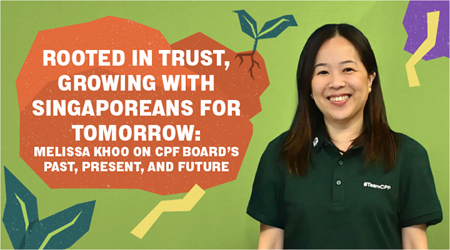Singapore Together: Citizens’ Panel On Work-life Harmony

AT A GLANCE
Number of participants: 55 citizens, including two public officers, employers, employees, the self-employed and retirees
Stakeholders involved: Strategy Group, Prime Minister’s Office; Ministry of Manpower; Ministry of Social and Family Development; Institute of Policy Studies; partners such as employer groups, professionals, unions, academics, and non-governmental organisations who shared their perspectives with citizen participants
Period of engagement: Four Saturdays (September 28 to November 9, 2019)
Engagement methods used: Citizens’ Panel, a deliberative engagement approach where participants are provided with resources and information to examine an issue deeply, and work together to develop solutions.
Chong Ser Chung
Assistant Manager
National Population and Talent Division
As part of the organising team, Ser Chung helped to plan the engagement process – from getting stakeholders to agree on the engagement approach, to designing and running the programme for all four CP sessions. His main role was to oversee the operational aspects of the CP, including participant recruitment, handling the logistics, and managing participants’ needs and feedback so that the participants had a positive experience during the sessions.
Choosing the right approach
The Citizens’ Panel format was new to his team and the first time they had involved citizen participants in developing solutions. “Participants even adjusted the programme to better meet their needs,” says Ser Chung.
The approach was designed in consultation with practitioners of deliberative engagements and other agencies with experience, such as the Ministry of Health (MOH) and the Institute of Policy Studies.
The team had to be very clear about the issues they were trying to address through this engagement approach. As the issue of work-life harmony is influenced by wider societal and cultural norms, the Citizens’ Panel was deemed a suitable tool to spur citizens to co-develop solutions in the workplace and community.
However, it also had its risks and challenges. The participants would decide on the final recommendations and the organisers had to quickly build capabilities to run such an engagement, as there were few local examples to learn from.
It helped that “colleagues from various agencies were willing to learn together with us as co-organisers and volunteered as facilitators,” he says. Senior management was also supportive, recognising the value of this engagement approach.
Throughout the process, MOH colleagues who had run the Citizens’ Jury for the War on Diabetes in 2017 played a critical role by providing guidance and assistance, enabling Ser Chung’s team to run the CP successfully.
A good experience for all
To ensure that participants had a good experience, the team had to feel the pulse on the ground, gather feedback in between sessions, and adjust the programme design so that all views were considered.
As more of such engagements take place, another useful outcome is citizens becoming more knowledgeable about the policymaking process.
Ser Chung says: “The participants shared that this experience led them to recognise the challenge that officers face in proposing policy recommendations, given the rigour required, and the need to consider multiple facets of an issue.”
They also felt more confident in the value of their contribution as a citizen, he adds. Over time, as more citizens participate in such engagements, it will build greater trust and understanding between the citizens and the government.
Learning points
Be upfront about the commitment required
Such engagements require heavy commitment from both the organisers (government and relevant stakeholders) and participants. The organisers commit to responding to the Panel’s recommendations, while citizens have to commit time and effort to intensive deliberations on a topic, and putting together a set of recommendations that reflects the consensus of more than 50 others. When these expectations are communicated clearly, there is greater trust between both the government and citizens, and among citizens themselves, to work on the issues together. This in turn helps to form new relationships and strengthen existing ones.
Understand the process’ concept and utility
Clarity in what the engagement aims to achieve is key, as different citizen engagement modalities should be considered for different issues and groups of citizens. The Citizens’ Panel process may not be appropriate for all types of engagements.
Be prepared to do things differently and adapt on the fly
The Citizens’ Panel is a democratic deliberation process that challenges the Public Service to do things differently from what we are used to. The organisers have to be flexible and respond appropriately to the dynamics in the room. In addition, while participants are given autonomy to make decisions, too much choice can hamper decision-making, while too little choice can make the engagement feel inauthentic.
- POSTED ON
Jan 24, 2020
- TEXT BY
Tuber
- ILLUSTRATION BY
mushroomhead
-
Deep Dive
Strengthening Singapore’s Food Security









